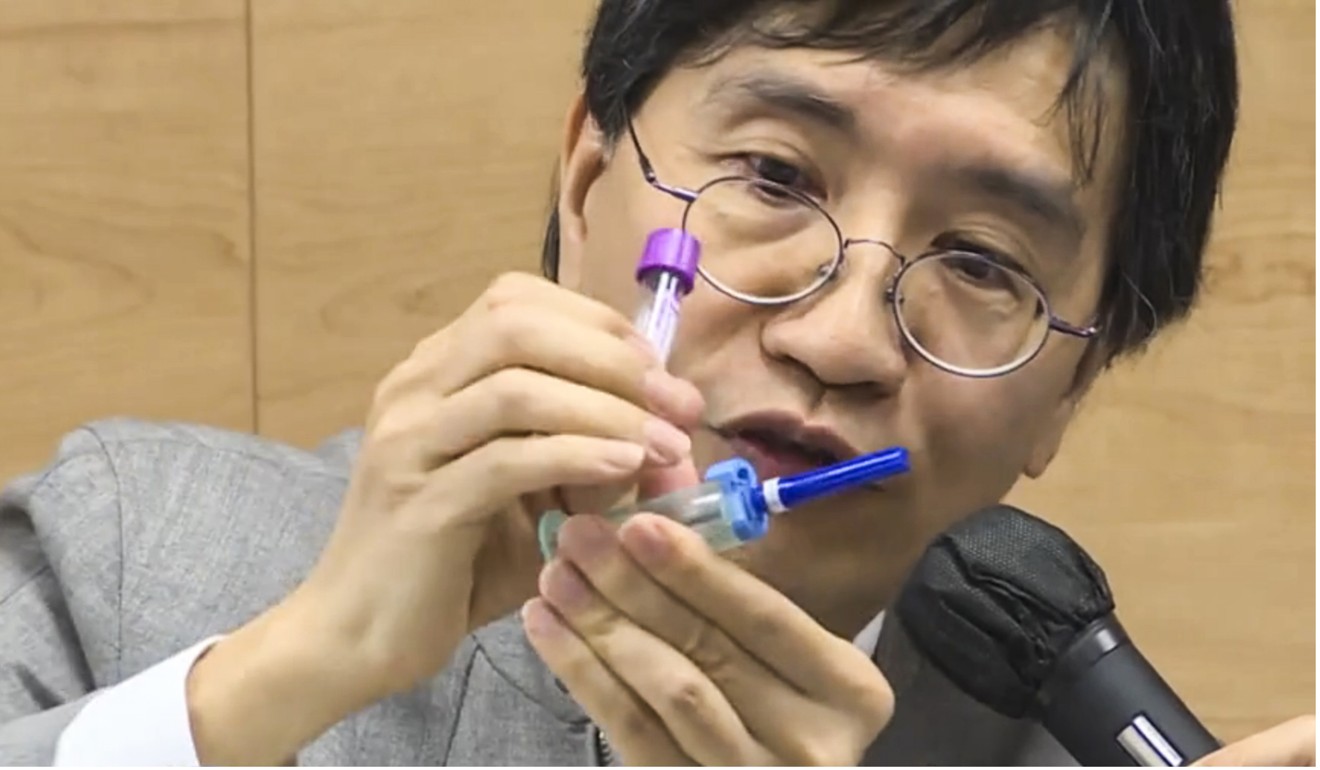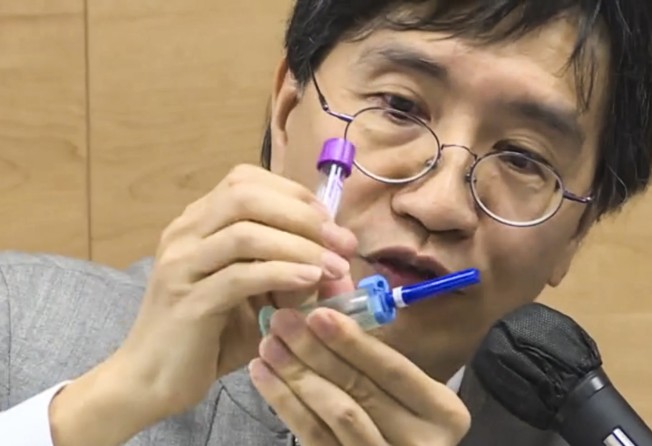
In worldwide first, Hong Kong hospital probe finds common blood tool infected liver patient with hepatitis C virus
Queen Mary Hospital’s suspicions were first raised when it found high levels of virus in a liver transplant patient despite her having displayed no risk factors before her death

Queen Mary Hospital will screen 58 patients for hepatitis C to rule out an outbreak of the infectious disease, after an investigation found – in a worldwide first – that a common reusable blood collection tool could have led to the virus being spread from its source, a drug addict who later died.
The hospital’s suspicions were first raised when it found high levels of the hepatitis C virus in a liver transplant patient, 53, after she died of multi-organ failure last December, the city’s top microbiologist, Professor Yuen Kwok-yung, said on Saturday. He was tasked with leading an investigation into her infection.
She had not displayed any risk factors before her death.
Yuen, of the University of Hong Kong, said the investigation had taken time and the team completed it on Thursday.

They identified the source of the primarily blood-borne virus as a deceased male drug addict who was at the public hospital at the same time and had been diagnosed with the same hepatitis C subtype.
“But even though the male patient and female were at Queen Mary Hospital at the same time, they stayed in two different wards away from each other due to their gender differences,” Yuen said, announcing the results of his investigation.
“We believe it was not likely for one of them to run into the other’s room and pass on the virus. So how did the infection happen? We thought the only connection between the two patients was the blood collection trolley, which travels around different wards.”
It is a very rare incident and had never been reported in the world. Many hospitals around the world use the same reusable holder
Yuen said his team finally discovered very tiny droplets of blood on a reusable plastic blood tube holder – which makes it easier to draw blood – and confirmed it contained the virus, which can stay alive on the material for as long as a month.
It was the first reported case in the world for the holder to cause infections in hospital, Yuen said.
“It is a very rare incident and had never been reported in the world. Many hospitals around the world use the same reusable holder,” he said.
“A disposable holder is only used in hospitals in some rich countries.”
Yuen said this was not a medical blunder as the World Health Organisation agreed that the tool could be reused. “I cannot see any suggestion of human error,” Yuen added.
Queen Mary Hospital’s chief executive, Dr Luk Che-chung, said the transplant ward had immediately replaced the reusable tool with a disposable one, and other wards would do the same gradually.

Luk believed 100 patients may have been exposed as they were in the wards at around the same period. However, some had since died for different reasons or had already been tested for the disease.
The hospital wanted to screen 58 patients and had managed to contact 43, with 15 still being sought.
The Hospital Authority’s deputising director of quality and safety, Dr So Wing-yee, said public hospitals had alerted medics about the risk of using such a tool, but it would take time to replace all of them. So did not give a time frame for such a change.
The investigation report was submitted to Queen Mary on Thursday, although the infection occurred in October.
Judging from the results, it was serious, as a patient was infected with hepatitis
“It was very time-consuming to investigate and when we [tested the holder], it took a lot of time to cultivate the virus from such a small drop of blood. We couldn’t do it any faster,” Yuen said.
“Since the liver transplant patient had very low resistance, a small volume of virus could infect her.”
A patients’ rights representative urged the authorities to stop reusing the holder immediately and hoped that this could be a lesson for the international health care community.
“Judging from the results, it was serious, as a patient was infected with hepatitis C,” said Tim Pang Hung-cheong, a spokesman for the Patients’ Rights Association. “Such incidents could be avoided by using a one-time apparatus.”
Pang added that the incident may affect citizens’ confidence in public hospitals.
The authority did not name the supplier of the holder or provide the price difference between a reusable and a disposable one.
Hepatitis C affects the liver and if left untreated can lead to cirrhosis or even liver cancer.